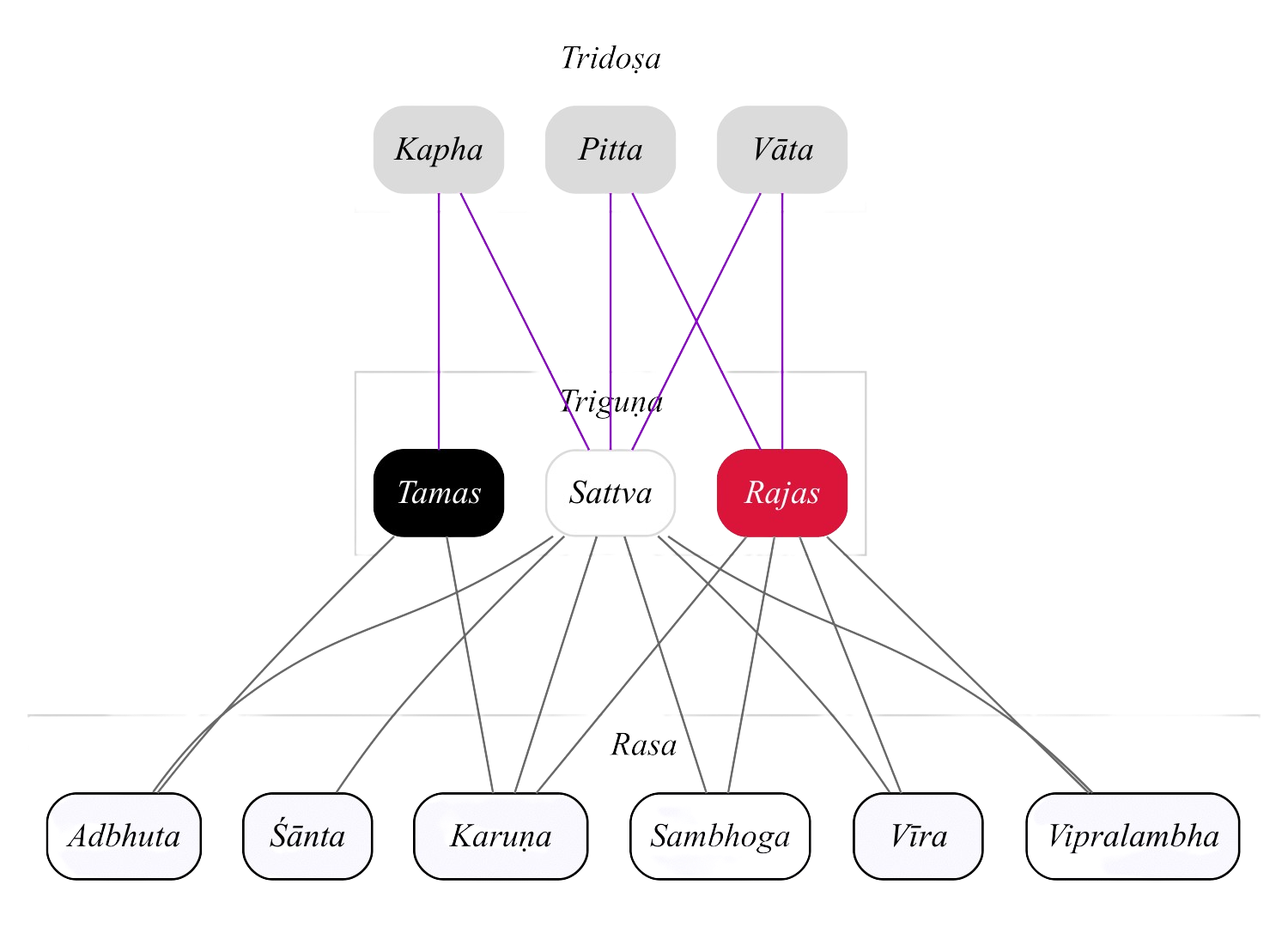- Identification: To identify a subject on whom the therapy will be conducted
- Composition: To select the best scale for the subject
- Execution: To execute the scale with the help of a well-versed musician
- Effect: To apply the therapy and to observe the result
Svara-Rasa-Doṣa Relation
First Stage Experimental Svara-Rasa Connections
| Sa | S A V |
| R | S K S2 |
| Ri | S A V S1 |
| G | S K S2 |
| Ga | S A V S1 |
| Ma | S A V |
| M | S A V S1 |
| Pa | S A V S1 |
| Dh | S K S2 |
| Dha | S A V S1 |
| N | S A V S1•2 K |
| Ni | S K S2 |
|
S=Śānta | S1=Sambhoga Śṛṅgāra | S2=Vimpralambha Śṛṅgāra | K=Karuṇa | A=Adbhuta | V=Vīra |
|
|---|---|
Relation Between Rasa and Doṣa through Guṇa

This SRD relation is established with the help of the theories of Indic musicology, aesthetic and Ayurveda. The ties with rasas are mostly based on Sarasvatīhṛdayālaṅkāra/Bharatabhāṣya of Nānyadeva (1097 - 1147 AD.) and Sri Govinda S Tembe. For more information, please see the thesis.
This site is an intermediary tool for the Vedic Model of Music therapy, proposed in the doctoral thesis of Mr. Abirlal Gangopadhyay, submitted to the Department of Sanskrit Studies, School of Humanities, University of Hyderabad, Hyderabad, India: Rasa Analysis of Sthūla-Paśyantī id est Non-lyrical Non-Percussive Indian Pure Music: A Pragmatic Approach in Therapeutic Context.
The proposed Therapeutic model is Vedic in this sense that it is inspired by the Gāthāgāna of the Yajurvedic Aśvamedha rite (Śatapatha Brāhmaṇa, 13.1.5 [also]; Taittirīya Brāhmaṇa, 3.9.14 & Kāṇva Śatapatha Brāhmaṇa, 15.1.5).
The model is fourfold in nature:
This site will help the second part of this fourfold therapeutic model to select a melody for a therapy. According to the emotional requirement, this site will help one researcher/therapist select the same based on the sonant note, i.e., vādin svara.
To explore more, please see the thesis.